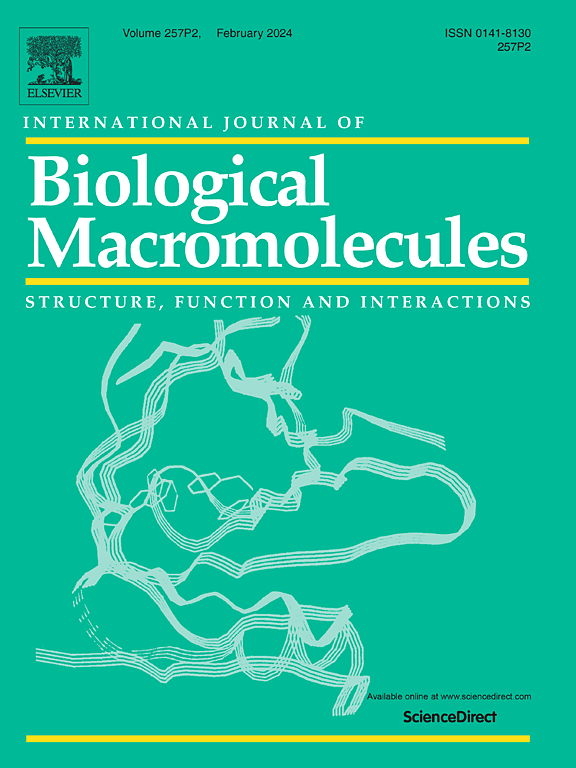Biopolymer aerogels: Structural and functional tailoring of starch/sodium alginate networks
IF 7.7
1区 化学
Q1 BIOCHEMISTRY & MOLECULAR BIOLOGY
International Journal of Biological Macromolecules
Pub Date : 2025-04-01
DOI:10.1016/j.ijbiomac.2025.142774
引用次数: 0
Abstract
This study explores the synthesis, structural, and functional properties of starch/sodium alginate aerogels prepared via two-step and multi-step solvent exchange methods, with and without calcium chloride (CaCl2) crosslinking. Fourier-transform infrared (FTIR) spectroscopy confirmed that both polymers were incorporated in an aerogel matrix, while Brunauer–Emmett–Teller (BET) analysis revealed that the preparation method and composition of initial polymer solution had a significant influence on surface area and porosity. Specifically, the surface area ranged from 4 to 132 m2/g, with multi-step solvent exchange producing aerogels with higher surface area and porosity. Scanning electron microscopy (SEM) showed that multi-step solvent exchange produced more homogeneous aerogel structures, while the two-step method was more effective for sodium alginate-rich aerogels. Mechanical testing revealed that crosslinked aerogels achieved a maximum stress force of up to 12 MPa, significantly higher than non-crosslinked aerogels, which showed a maximum stress of 9 MPa. Swelling studies in PBS buffer (pH 7.4) indicated that the equilibrium swelling degree (SDeq) increased with sodium alginate content, with values ranging from 330 to 656 % for sodium alginate-rich samples, due to carboxyl group dissociation, whereas non-crosslinked samples, particularly those with higher sodium alginate content, dissolve in PBS buffer. Neat starch aerogels exhibited lower swelling behavior, with SDeq values around 300 %, and were largely unaffected by the addition of the crosslinker. These findings highlight the tunable structural, mechanical, and swelling properties of starch/sodium alginate aerogels, making them promising candidates for numerous applications such as drug delivery and environmental remediation applications.

求助全文
约1分钟内获得全文
求助全文
来源期刊
CiteScore
13.70
自引率
9.80%
发文量
2728
审稿时长
64 days
期刊介绍:
The International Journal of Biological Macromolecules is a well-established international journal dedicated to research on the chemical and biological aspects of natural macromolecules. Focusing on proteins, macromolecular carbohydrates, glycoproteins, proteoglycans, lignins, biological poly-acids, and nucleic acids, the journal presents the latest findings in molecular structure, properties, biological activities, interactions, modifications, and functional properties. Papers must offer new and novel insights, encompassing related model systems, structural conformational studies, theoretical developments, and analytical techniques. Each paper is required to primarily focus on at least one named biological macromolecule, reflected in the title, abstract, and text.

 求助内容:
求助内容: 应助结果提醒方式:
应助结果提醒方式:


